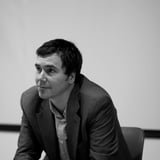Summary
Determining a staffing model for the success of your design teams is one of the key elements for driving success. By reviewing the differences between dedicated and agency (or flexible) staffing models, Alicia Mooty will walk the group through a case study of applying these types of models in her work at Adobe.
Key Insights
-
•
Dedicated staffing fosters deep vertical expertise and long-term relationships with product teams.
-
•
Agency (pooled) staffing offers designers horizontal breadth and varied growth opportunities through rotations.
-
•
Neither model alone perfectly fits complex, changing environments; a hybrid approach can leverage both strengths.
-
•
Hybrid staffing enables quicker filling of critical design gaps without waiting for new hires or headcount approvals.
-
•
Careful bandwidth assessment across design, product, and engineering partners is key to reallocating resources.
-
•
Designers’ preferences vary; some crave stability and mastery, others seek variety and career growth.
-
•
Changing a staffing model requires proactive relationship building, clear communication, and managing stakeholder expectations.
-
•
Splitting designers’ time across multiple projects can cause work-life balance challenges, needing close oversight.
-
•
Ongoing communication is essential to renegotiate priorities and maintain alignment as projects and staffing evolve.
-
•
Short-term agency assignments raise questions about maintenance responsibility and require explicit planning.
Notable Quotes
"How do you organize a design team to work within a changing environment without freaking everybody out."
"Dedicated staffing gives designers deep vertical mastery but limits horizontal experience."
"Agency style staffing allows designers to bring learnings across multiple projects and grow through new challenges."
"One designer's security in a dedicated model may be another designer's stagnation."
"It took a lot of relationship building and conversations to break down the perception that designers' time was owned by particular teams."
"We covered critical design gaps without waiting for headcount allocation or hiring delays."
"Splitting people’s allocation across different teams created work-life balance issues requiring more oversight."
"Constant communication is necessary; agreement emails can’t be one-and-done."
"Some needs proved full-time, so hybrid staffing models are often short term or mixed part-time."
"Involving designers early in the process is crucial to avoid the 'fast-food' model where they feel like order takers."
Or choose a question:
















More Videos

"Conscious uncoupling is about identity — how one thinks of oneself defines oneself and how others define you."
Nalini KotamrajuResearch After UX
March 25, 2024

"Don't be a pot plant, be a crab."
Dean BroadleyNot Black Enough to be White
January 8, 2024

"Racism is by design, and there's no way to counter it unless we counter it with design."
Denise Jacobs Nancy Douyon Renee Reid Lisa WelchmanInteractive Keynote: Social Change by Design
January 8, 2024

"Failure isn’t discouraging; it’s an opportunity to learn and improve your approach."
Kim Fellman CohenMeasuring the Designer Experience
October 23, 2019

"We mostly have something called a BYOE scenario or bring your own ethics."
George AyeThat Quiet Little Voice: When Design and Ethics Collide
November 16, 2022

"You have to treat the design system like a product that everyone in your organization will use."
Nathan CurtisBeyond the Toolkit: Spreading a System Across People & Products
June 9, 2016

"Platforms need researchers and designers to make them meaningful and intentional for the people they are designed to serve."
Greg PetroffThe Compass Mission
March 10, 2021

"Culture is the sticky glue holding us together but flexible enough to allow us to move in new directions."
Chloe Amos-EdkinsA Cultural Approach: Research in the Context of Glocalisation
March 27, 2023

"85% of people were leaving after viewing only one page, showing severe bounce issues."
Mackenzie Cockram Sara Branco Cunha Ian FranklinIntegrating Qualitative and Quantitative Research from Discovery to Live
December 16, 2022
















